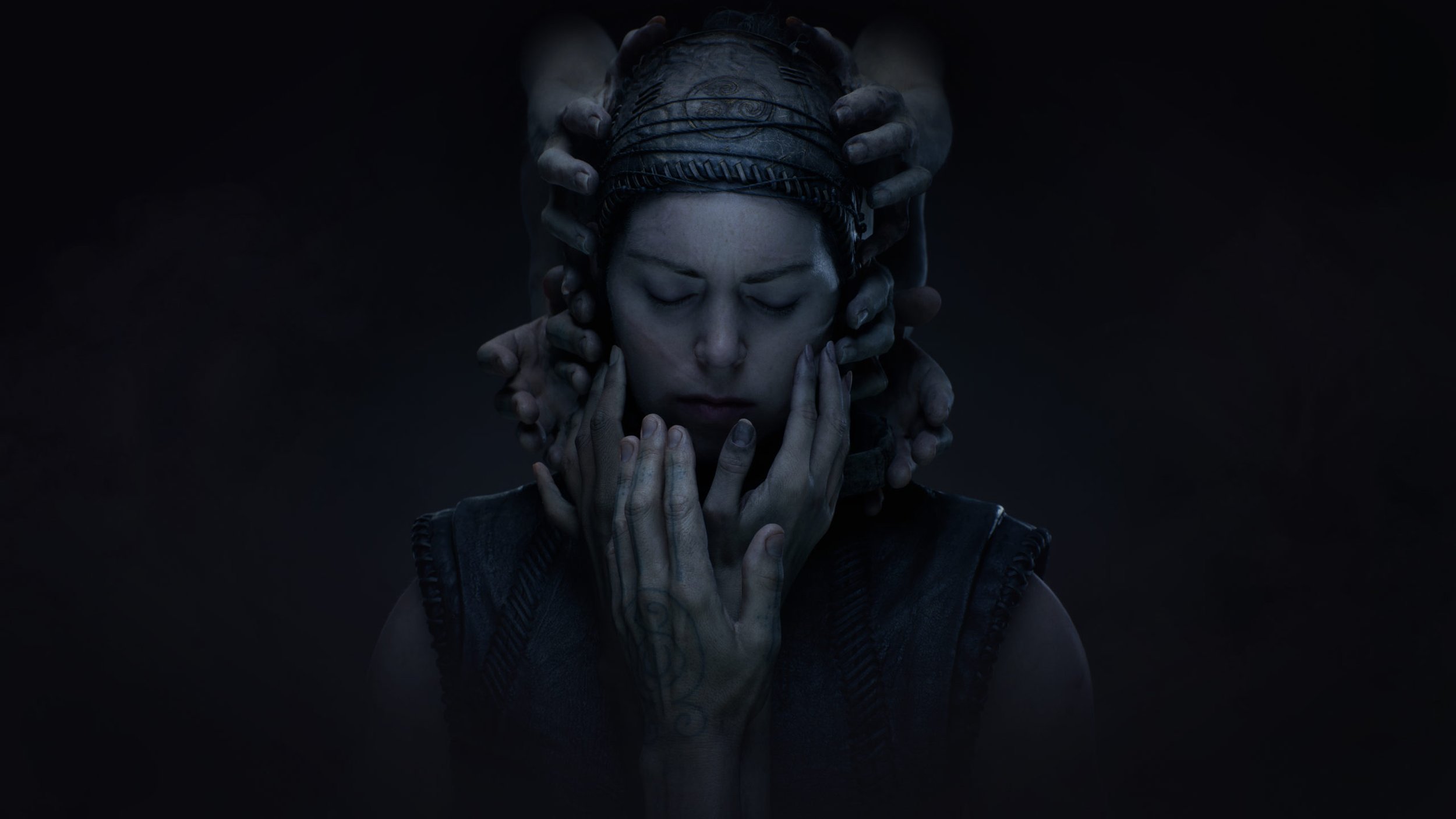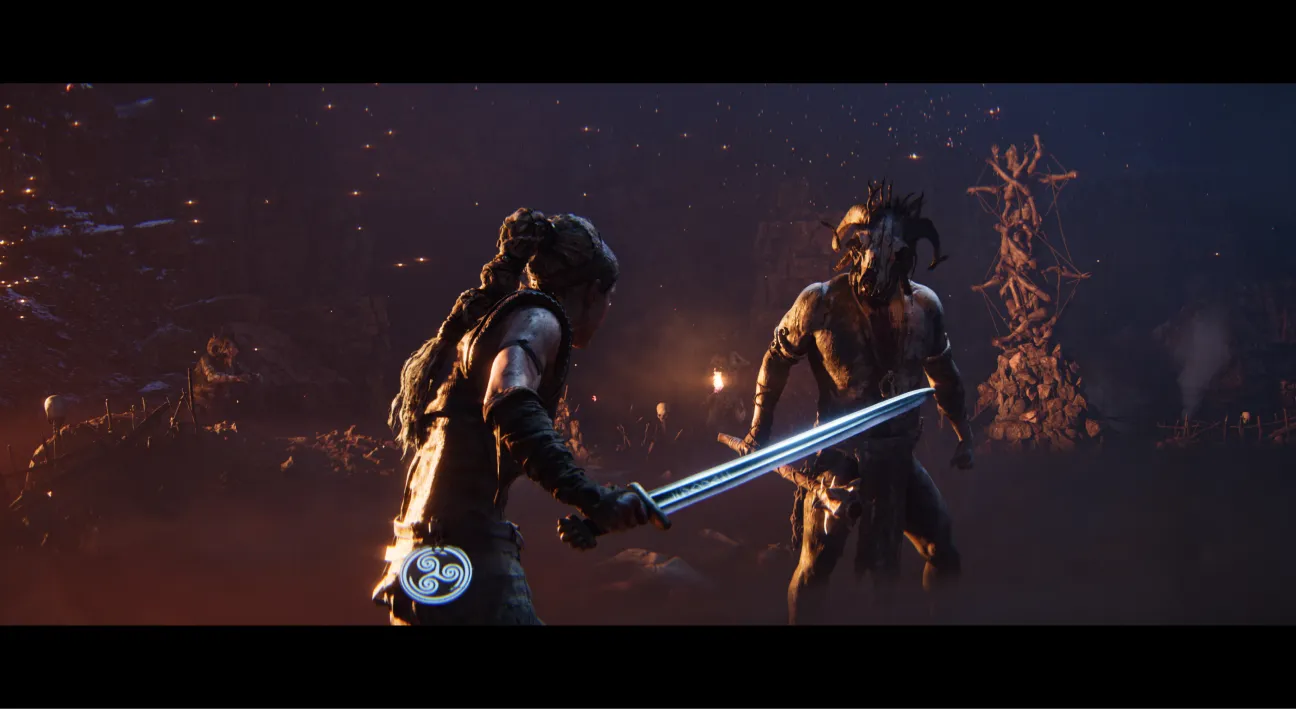Senua’s Saga: Hellblade II Review
“Senua’s Saga Continues…” Written by: Hunter (@ReaperHunter23)
I’ve been excited for Senua’s Saga: Hellblade 2 since it was announced back in 2019. My excitement and curiosity only grew once I sat down and played the first game, Seuna’s Sacrifice, a year later. The first game was pretty self contained, so I was curious to see what Ninja Theory had up their sleeve. Would Senua’s Saga manage to deliver another emotionally gripping journey? Or would it end up feeling more like a retread of what’s already been done? Let’s take a look.
Image Credit: Ninja Theory, Xbox
The best way to describe the gameplay of Senua’s Saga is simple but effective. You could essentially divide the gameplay to three major elements: Combat, puzzles, and set pieces with traversal from area to area.
The combat is much more locked off and personal in this game than it was in its predecessor. Rather than dealing with swarms of monsters potentially smacking you from off camera, you are locked to one enemy at a time as if it were a duel. Mechanically, it has what you would expect. Light attack, heavy attack, parry, and dodge. The time stopping mirror from the first game also makes a return if there’s a particular enemy giving you a hard time. I never found combat to be particularly hard, I only died maybe 3 or 4 times. But I feel like the game was really good at making it feel like I just barely survived each encounter.
The animations for the combat do a lot to elevate it. Because it's all presented as these singularly focused battles, everything feels so much more personal. Every successful dodge still feels like Senua was a hair’s breadth from being cut open. Every missed parry causes the full weight of the enemy to come down on your sword, causing Senua to be driven down to one knee. All of Senua’s attack animations feel like these wild swings as if she were possessed by a demon. And the kill animations all serve as visceral punctuation marks for these encounters.
Senua’s Saga expands the puzzle offerings from the first game too. The perspective puzzles make a return. These involve finding a set of Norse Runes hidden in the environment in order to unlock gates that would be barring your path. They function pretty much the same as they did in Senua’s Sacrifice, with the one exception being that there seems to be some kind of aim assist that snaps you to the correct angle if you are close enough. This didn’t bother me because I would usually not hit the focus button until I already figured out where the rune was.
The new puzzles focus more on changing up the environment. Placing an orb in a pedestal will either make a new path materialize or it will make a path disappear. There are spheres of water that function in the same way but are activated by focusing on them. The puzzle is usually figuring out the order in which you need to trigger things. Sometimes after you do one part you’ll want to go and deactivate a path that you had previously made materialize.
Later on, the game will layer the different elements onto each other. Where it asks you to find the runes to unlock that gate, but in order to do that you have to shift the environments around in order to find the proper perspective. I thought it was a natural and effective way to merge the two ideas and keep the last few puzzles from feeling repetitive.
The set piece moments in the game were a cool change of pace. I won’t go into too much detail because they all happen during pivotal story beats, but I did find them to be a cool change up from what I was doing previously with the combat or puzzles.
Image Credit: Ninja Theory, Xbox
Senua’s Saga picks up not too long after the first game. Senua has taken it upon herself to travel north and put an end to the slavers that are kidnapping and enslaving her people. Shortly after arriving she discovers that the lands of the Northmen are being ravaged by monstrous giants and that the situation is a bit more complex than she initially believed. I was really interested to see what Ninja Theory would do for the story of this game. What else did they believe there was to explore about Senua and her journey? I’m pleased to say that Senua’s Saga felt like a pretty solid next step in Senua’s story.
One thing that helps set it apart is that there’s a small supporting cast. Senua spends most of her time in the game on her own, but throughout her journey she ends up collaborating with other people like Fargrimr and Thorgester. Seeing her interact with people in real time adds another layer onto her character since her only interactions with other people in the first game were in memories.
A cool illustration of Senua’s growth from the first game to this one is the voices in her head. In Sacrifice they were frantic, doubting, and quite hostile towards Senua for most of the game. In this game the voices seem to be more encouraging. The doubts and hostility are still there because that’s not the kind of thing that just goes away, but now it's a stray voice or two rather than a whole chorus of them telling Senua that she’s a miserable failure.
Senua’s Saga is an interesting thematic companion to the first game. The first game was pretty singularly focused on Senua and her trauma. This time the story is focused on Senua carrying that trauma with her while still being able to live. One of the prevailing themes of the game is: All monsters began as people. A major part of Senua’s trauma was being ostracized as a monster because of the way her psychosis made her see the world. So one of the aspects that the story explores is what sets Senua apart from the giants and how she could have turned out to be like them.
Image Credit: Ninja Theory, Xbox
The presentation of Senua’s Saga is impeccable. Visually speaking, it looks impossibly good so often. It is probably the nicest looking game I’ve ever seen. Something I appreciate is that despite the photorealism-esque level of fidelity, the visuals still have a certain style to them. The areas where you are reshaping the environment feel otherworldly. There are certain gameplay segments where an overlay representative of the creatures you are fighting will creep in as their threat level increases. The way that the world reshapes during certain story beats has some rather interesting visuals as well. I already mentioned how well animated the game is when discussing the combat, but the animation is just as great when capturing Senua’s expressions during the cinematics.
The sound design in Senua’s Saga is fantastic as well. I don’t say this very often, but wear headphones when you play this game. It gives so much more clarity to being able to hear the voices in Senua’s head. And it provides an extra level of detail as far as them feeling like they are occupying different spaces. Sometimes when you are close to dying the voices will sound like they are being filtered through static which is a cool new detail. The music in the game is delightful as well. The combat encounters are all scored by these high energy drum heavy pieces with some impressive throat singing to make it feel like all of your duels are happening inside of some kind of ritualistic fight pit. The rest of the score ranges from serene and ethereal to ominous and threatening depending on what the situation calls for.
The performances in Senua’s Saga were great. Meliena Juergens as Senua is still one of the most captivating performances I’ve ever seen. Hearing the performances from the more grounded supporting characters like Chris O’Riley as Thorgestr and Aldis Amah Hamilton as Astrior illustrates an interesting contrast between Senua and the rest of the cast. I also found the performances for the giants to be really well done. They did a great job at illustrating the pain of the creatures when Senua confronted them.
Image Credit: Ninja Theory, Xbox
Summary
If you played and enjoyed Senua’s Sacrifice, or if you are a fan of story driven, cinematically presented games, then Senua’s Saga is a must play. The game committed to a vision and I believe that it brought that vision to life spectacularly. The elements in the gameplay are simple but they still work in service to the full package of the experience. If a game calls for a simpler level of gameplay, I’d much rather have simple gameplay that doesn’t get in the way, rather than something that might be more complex but still isn’t fun. As it is, all of the elements of the game synergize wonderfully. Combat encounters set up by dramatic story moments still felt intense because of the incredible way they were presented. The impressive visuals, sound design and performances all brought to life another emotionally captivating chapter in Senua’s story.





